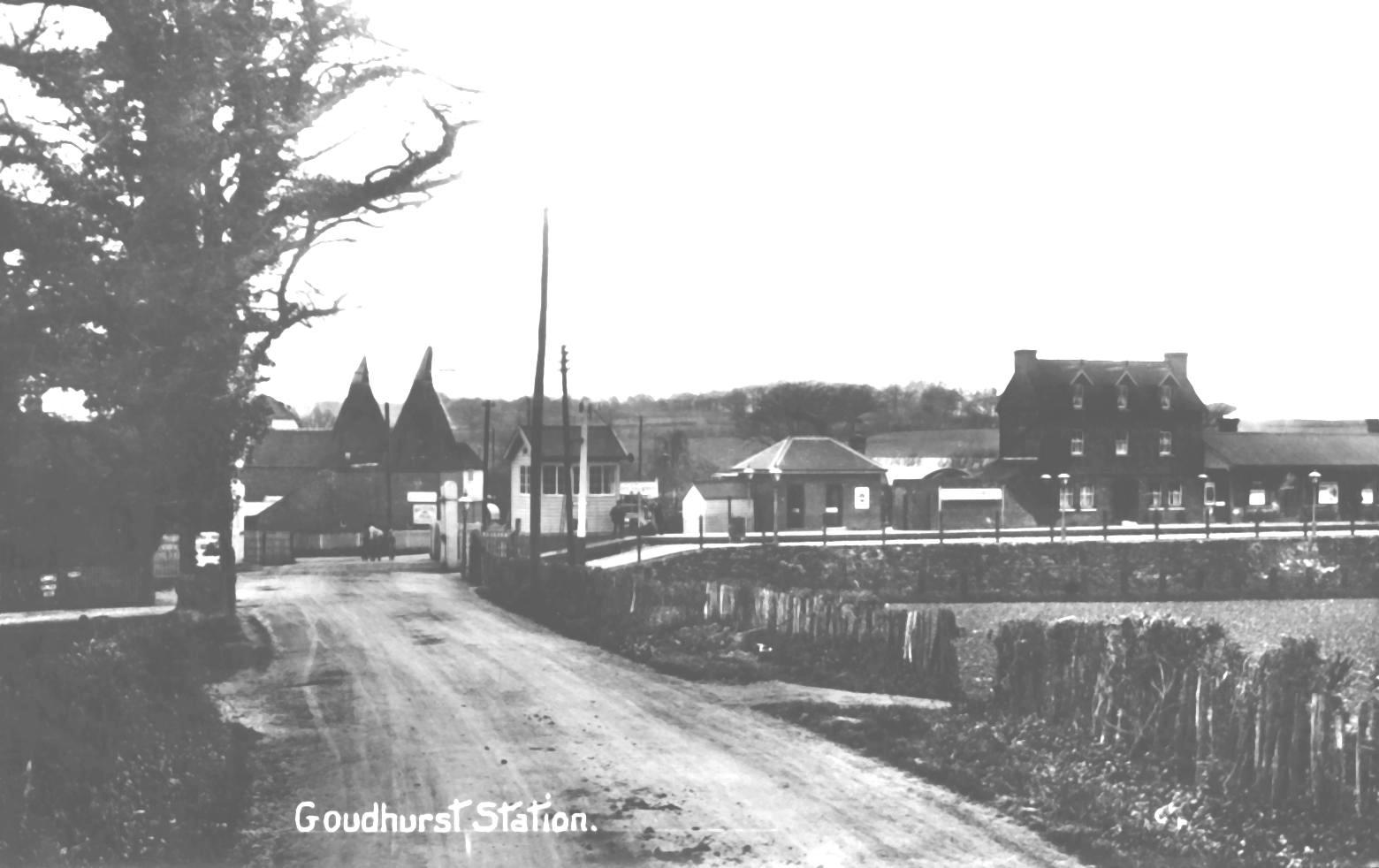
|
The Hawkhurst Branch 1892 - 1961 |
Ken Elks Copyright © 2002
The Hawkhurst Branch was first proposed as the Cranbrook and Paddock Wood Railway in 1877 with a promise of support from the South Eastern Railway, always anxious to prevent their arch-rival, the London, Chatham & Dover Railway, from gaining a foothold in what they regarded as their territory. Despite work starting in 1879, constant delays meant that it was twelve years before the line was ready for passengers, the first section, from Paddock Wood to Goudhurst (originally named Hope Mill) via Horsmonden, opening on 1 October 1892. Nearly a year passed before the final part of the line came into service, the extension to Hawkhurst via Cranbrook opening on 4 September 1893. H.F.Stephens, later known as Colonel Stephens, was the resident engineer during construction, appointed at the early age of 22.
From the outset all train services were operated by the South Eastern Railway, though the Cranbrook and Paddock Wood Railway was not officially absorbed until 1900. The SER and the LCDR combined in 1899 under a Management Committee operating as the South Eastern & Chatham Railway, and thence passing to the Southern Railway under the 1923 grouping and finally British Railways after nationalisation in 1948. The line finally closed on 12 June 1961.
Passenger trains operated from a bay on the southern side of Paddock Wood station and passed under the signalbox known as Paddock Wood B as they left, then running parallel to the main line to Ashford for about half a mile before turning south-eastwards towards Horsmonden. The line was single throughout, with passing loops provided at all three intermediate stations, though only Goudhurst had two platforms. A short bay platform was provided at the terminus. Apart from Horsmonden, none of the stations were close to the towns and villages they purported to serve, that at Goudhurst being a mile away and up a steep hill, Cranbrook over two miles and Hawkhurst also just over a mile. Most passenger trains consisted of two coaches (fitted for push-pull operation in the 1920's) but in later years much larger trains transported hop-pickers from London to work on Kentish farms in the summer. The Sentinell-Cammell steam railbus originally used on the Brighton-Devils Dyke branch, put in a brief appearance in 1936 but was not a success. Goods traffic was mainly fruit and hops outwards and coal inwards. One mainstay was the transport of a million potted plants a year on behalf of Woolworths to branches all over the country.
Today there are little visible remains of a railway that seemed to epitomise a rural branch line. The Horsmonden tunnel is still in existence but hidden and the station buildings at Horsmonden and Cranbrook also survived, one a garage, the other a private house, over 20 years later. Perhaps the most conspicuous survivor is the Hawkhurst signalbox, preserved in the woodyard that took over the station site.

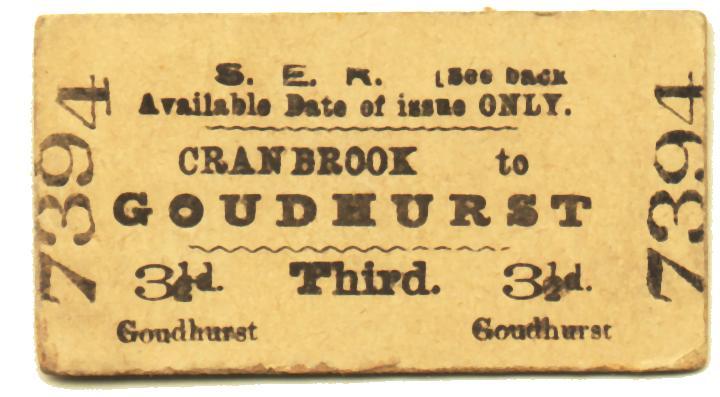
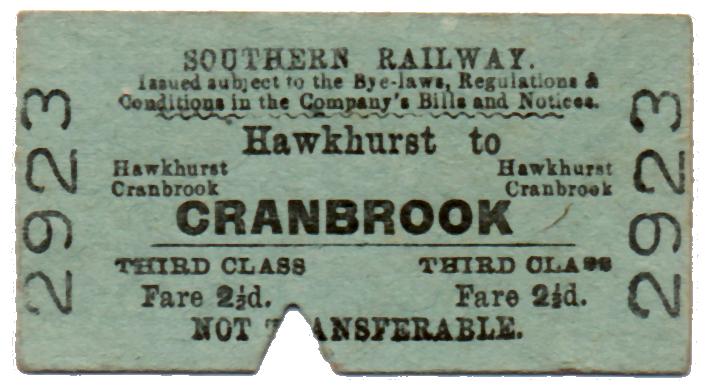
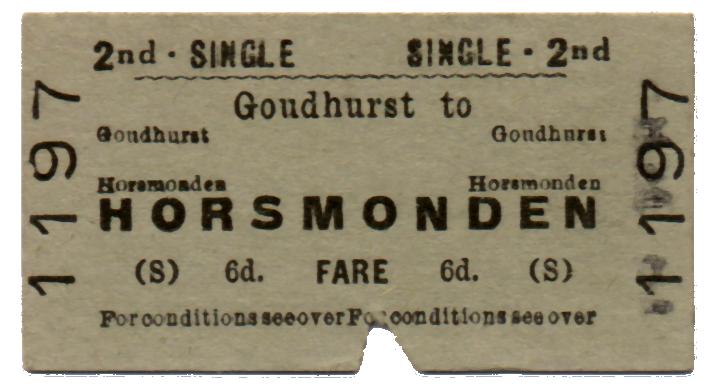
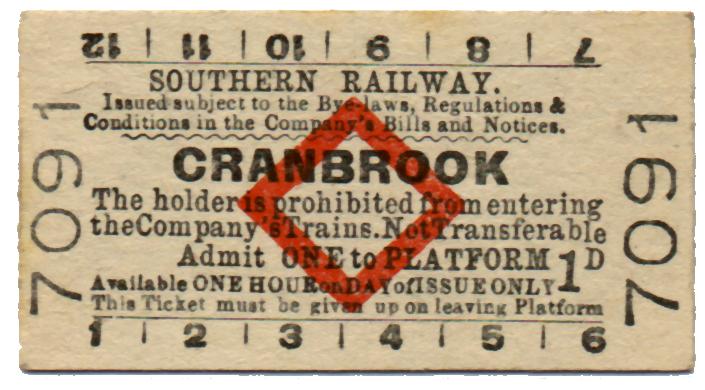
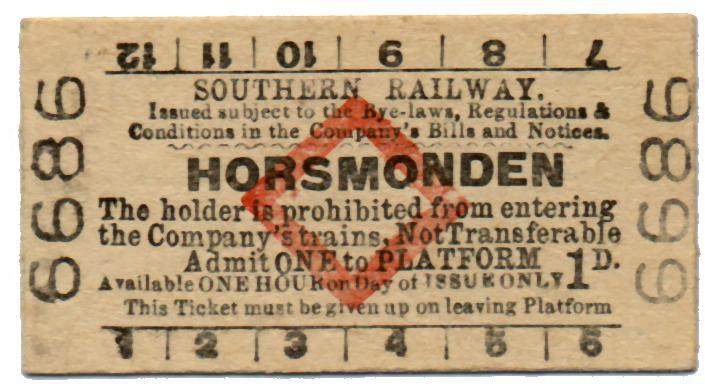
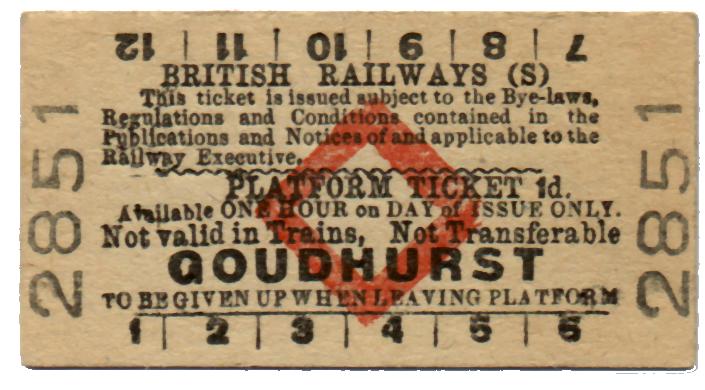
Further reading:
"The Hawkhurst Branch Line" by Peter A. Harding, published in 1982
Mossgiel, Bagshot Road, Knaphill, Woking, Surrey
|
AVAILABLE NOW East Kent Railway Tickets 1916-1948 by Ken Elks. 71pp colour, listing all known surviving tickets with dates of issue. Price £10, post paid. |